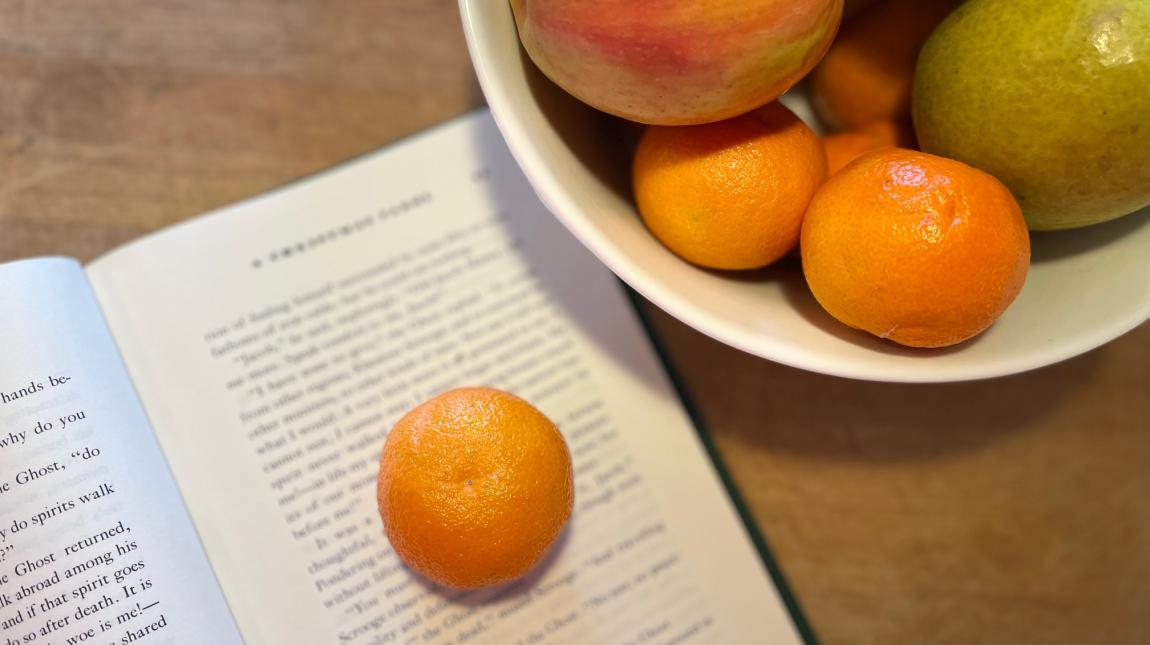

The Spirit of Dickens
Every year, a few days before Christmas, I begin reading A Christmas Carol. It is a story that has been told and retold a hundred times over for a reason...it is brilliant. Not only is the concept of a ghost story for Christmas completely genius, but the writing itself in this little novella is representative of the best of Charles Dickens. It is tight and impactful, with almost none of the long-winded prose you may remember from having to read some of his other works in high school. To me, A Christmas Carol is in a class of its own.
There are five staves, or chapters. This economical structure does exactly what it needs to do with nothing superfluous. The first chapter gives us all we need to know about Scrooge and his acquaintances in order to lay the groundwork for the visits of the three Spirits in the next three chapters. “The End of It”, or Stave Five, wraps things up neatly with a bow. It leaves us feeling lighter, kinder, and more grateful for the gift that is tomorrow.
I love the psychological implications of this story (it’s so interesting to interpret the visitations as dreams and consider how Scrooge’s encounters during the day manifest themselves in dream language that night) as well as the way Dickens, like so many greats, manages to put his finger on things that live in our hearts. Everyone can relate to the feeling when Scrooge wakes up from the turmoil of a nightmare to the sweet relief of morning. Everyone can relate to the terrible injustice of childhood illness and the frustration of helplessness. Everyone knows, though doesn’t always want to admit, how we must beware of Ignorance and Want.
But among all the reasons I love this text and revisit it every year is the rich, acutely descriptive language that embellishes the pages. And here is one of my very favorite passages. Dickens really struts his feathers here as a master storyteller as the Ghost of Christmas Present takes Scrooge for a stroll through the streets of London to witness the joyful abundance of the holly-decked storefronts. We all know I love all things food-related, and the playful personification of fruits and vegetables here is nothing short of delightful.
There were great, round, pot-bellied baskets of chestnuts, shaped like the waistcoats of jolly old gentlemen, lolling at the doors, and tumbling out into the street in their apoplectic opulence. There were ruddy, brown-faced, broad-girthed Spanish Onions, shining in the fatness of their growth like Spanish Friars, and winking from their shelves in wanton slyness at the girls as they went by…
There were pears and apples, clustered high in blooming pyramids...there were piles of filberts, mossy and brown, recalling, in their fragrance, ancient walks among the woods, and pleasant shufflings ankle deep through withered leaves; there were Norfolk Biffins, squab and swarthy, setting off the yellow of the oranges and lemons, and, in the great compactness of their juicy persons, urgently entreating and beseeching to be carried home in paper bags and eaten after dinner.
...the candied fruits so caked and spotted with molten sugar...the figs were moist and pulpy...the French plums blushed in modest tartness from their highly-decorated boxes… (56-57)
I mean, come on! I practically want to eat the page, and passages like these help me to remember the value of the simplicity of whole foods. It makes me appreciate the bowl of shiny mandarins and juicy pears on my countertop more than the packaged, processed things we all buy. A reminder to be grateful for gifts from the earth, in all their perfection.
So, friends, if you’ve seen renditions of this story but have never read the original, I highly recommend it. Maybe you’ll even join me in my little yearly ritual! I wish you a joyous holiday season and a new year full of light, learning, and love.
Excerpt taken from Charles Dickens A Christmas Carol. Barnes and Noble, Inc: 1994.


Be the first to comment!